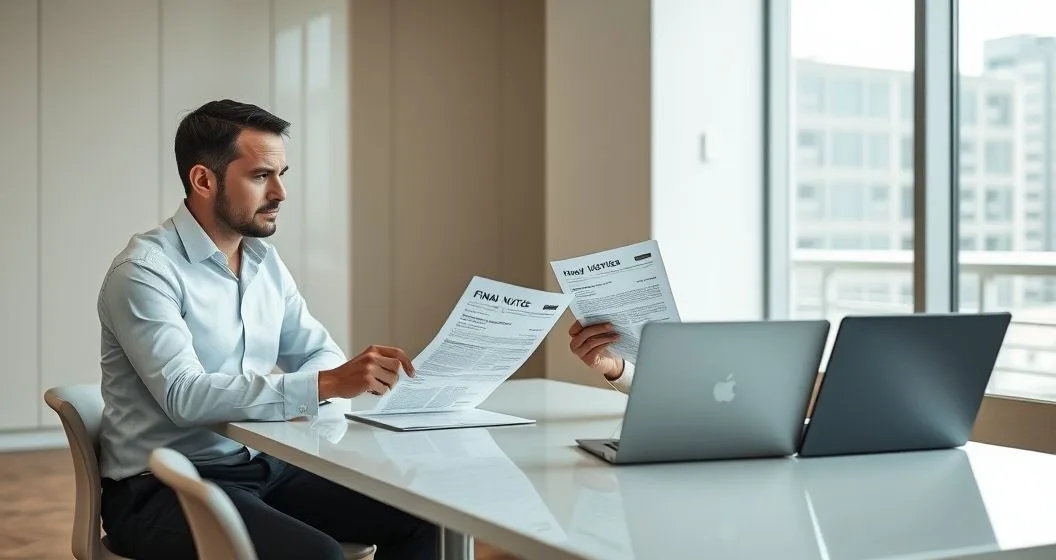Background
The LT11 is part of the IRS collection flow for unpaid federal tax accounts. It typically arrives after earlier balance-due and reminder notices and serves as the final written warning before the IRS moves to levy assets or garnish wages. The notice will state the amount due, explain the 30-day response window, and list steps that will follow if you do not act (levy, potential lien actions, or referral to a revenue officer).
How the LT11 works and your timeline
- The LT11 generally gives you 30 days from the date on the notice to respond. If you do nothing, the IRS may proceed with a levy on your bank accounts, wages, or other property.
- You can stop a levy by paying in full, entering a qualifying installment agreement, filing an Offer in Compromise (if eligible), qualifying for Currently Not Collectible status, or requesting a Collection Due Process (CDP) hearing (timely filed) using Form 12153 (see IRS guidance) (IRS: https://www.irs.gov/individuals/how-to-respond-to-a-notice).
In my practice, clients who act within the 30‑day window most often preserve negotiation options; missed windows make emergency relief harder and sometimes costlier.
Options to avoid or stop a levy
- Pay in full: immediate release of enforced collection.
- Installment agreement: request an online or IRS-assisted payment plan; this often halts a levy if approved quickly (IRS payment options: https://www.irs.gov/payments).
- Offer in Compromise (OIC): if you can demonstrate inability to pay the full tax debt, you may settle for less (OIC rules apply; see IRS Offer in Compromise guidance).
- Request a CDP hearing: file Form 12153 within the 30 days to appeal the levy and potentially stop collection actions while the appeal proceeds (IRS CDP information: https://www.irs.gov/appeals).
- Currently Not Collectible (CNC): if you show financial hardship, the IRS may temporarily suspend collection.
Practical steps to take immediately after receiving an LT11
- Read the notice carefully and note the response deadline.
- Call the phone number printed on the notice (document date, name, and call details).
- Gather recent pay stubs, bank statements, and a budget to show ability (or lack of ability) to pay.
- Consider filing Form 12153 to preserve appeals rights if you dispute the debt or need time to negotiate.
- If you can, consult a CPA, enrolled agent, or tax attorney for case-specific advice.
Who is affected
Any taxpayer with an unpaid federal tax balance may receive an LT11: individuals, sole proprietors, partnerships, and corporations. Employers may receive related notices for unpaid payroll taxes, and small businesses are commonly impacted when payroll or trust fund liabilities are not resolved.
Common mistakes to avoid
- Ignoring the 30‑day deadline. Silence rarely stops the IRS and often leads to levies.
- Assuming a levy will only affect the primary account—joint accounts and third-party payors can be targeted.
- Believing telephone promises alone will stop a levy; get agreements in writing.
Real-world example (brief)
A client I worked with ignored earlier reminders and then received an LT11. By calling the number on the notice, submitting a short-term installment agreement request, and filing Form 12153 to preserve appeal rights, we paused collection and avoided a bank levy while negotiating a longer-term plan.
Related resources on FinHelp
- Learn how IRS collection actions escalate: From notice to levy — how IRS collections escalate and what to do.
- Compare final levy notices and responses: LT11 vs CP504 — identifying and responding to final levy notices.
Frequently asked questions
Q: How long do I have to act on an LT11?
A: Typically 30 days from the notice date. Acting within that window preserves appeals rights and options to stop a levy.
Q: Will the IRS notify me before levying my bank account?
A: Yes—the LT11 is intended to be the final written notice of intent to levy before enforcement, but levies can proceed after the notice period ends if unresolved (IRS: https://www.irs.gov/individuals/how-to-respond-to-a-notice).
Q: Can I negotiate after a levy starts?
A: Yes, but options narrow and releases usually require payment, an agreement, or emergency relief. Emergency relief steps are covered in our guide on stopping levies.
Next steps and documentation checklist
- Keep the LT11 and all prior notices.
- Note dates, amounts, and IRS contact info on the notice.
- Assemble proof of income, expenses, bank balances, and recent communications with the IRS.
- Consider certified mail for important filings and keep copies.
Professional disclaimer
This article is educational and does not replace personalized legal, tax, or financial advice. For case-specific guidance—especially if a bank levy or wage garnishment appears imminent—consult a qualified tax professional (CPA, enrolled agent, or tax attorney).
Authoritative sources
- IRS: How to respond to a notice — https://www.irs.gov/individuals/how-to-respond-to-a-notice
- IRS: Understanding your IRS notice — https://www.irs.gov/payments/understanding-your-irs-notice
- IRS Appeals/CDP general information — https://www.irs.gov/appeals
(Updated 2025).



